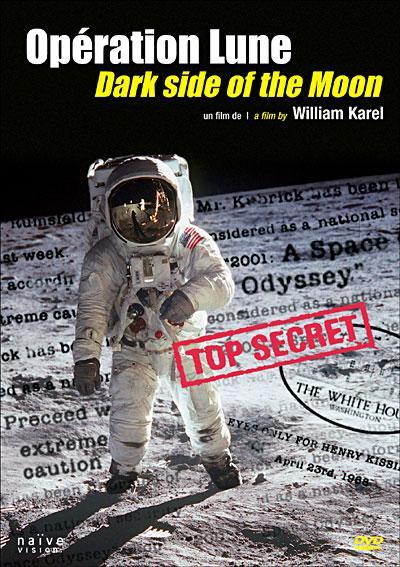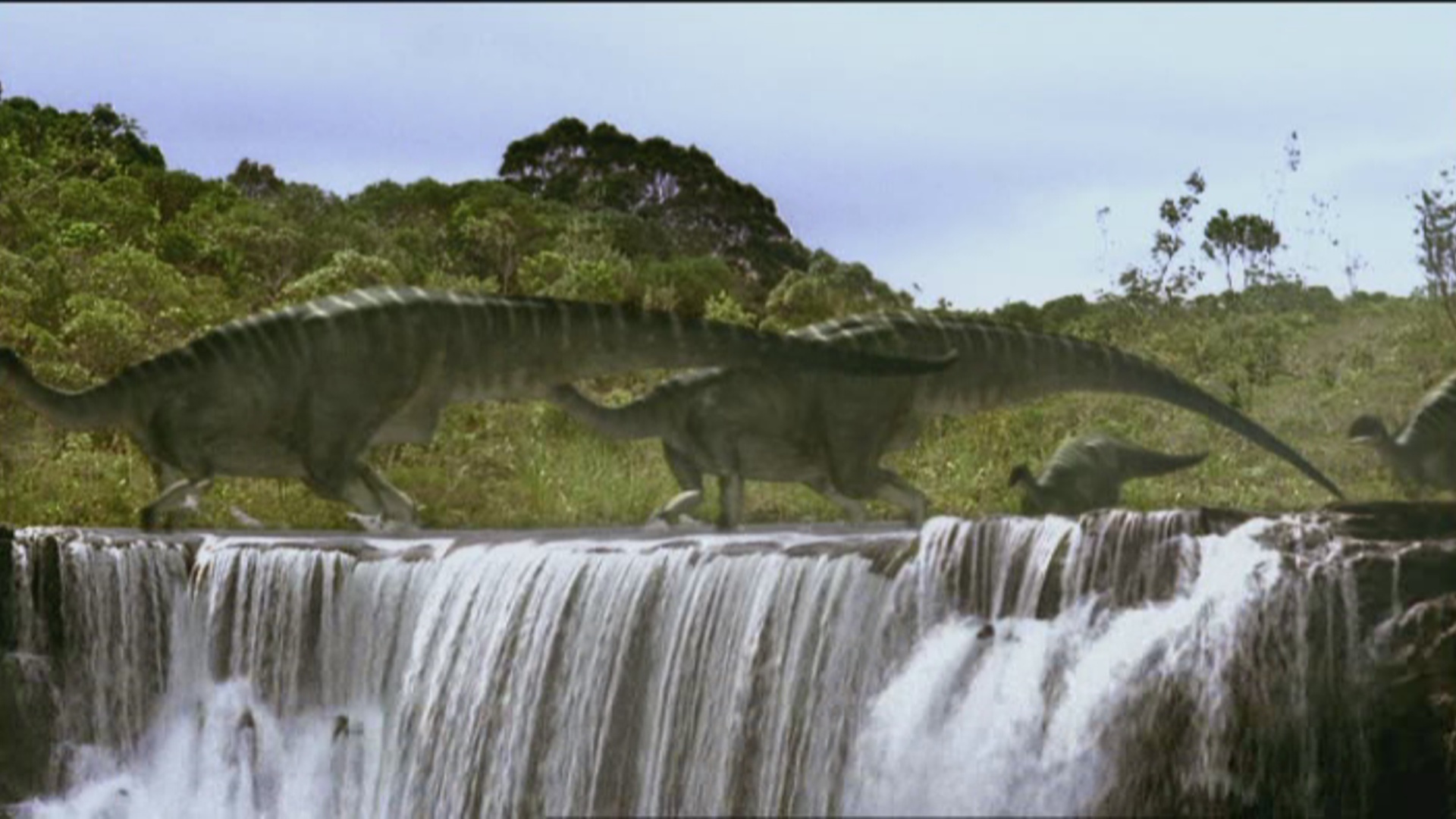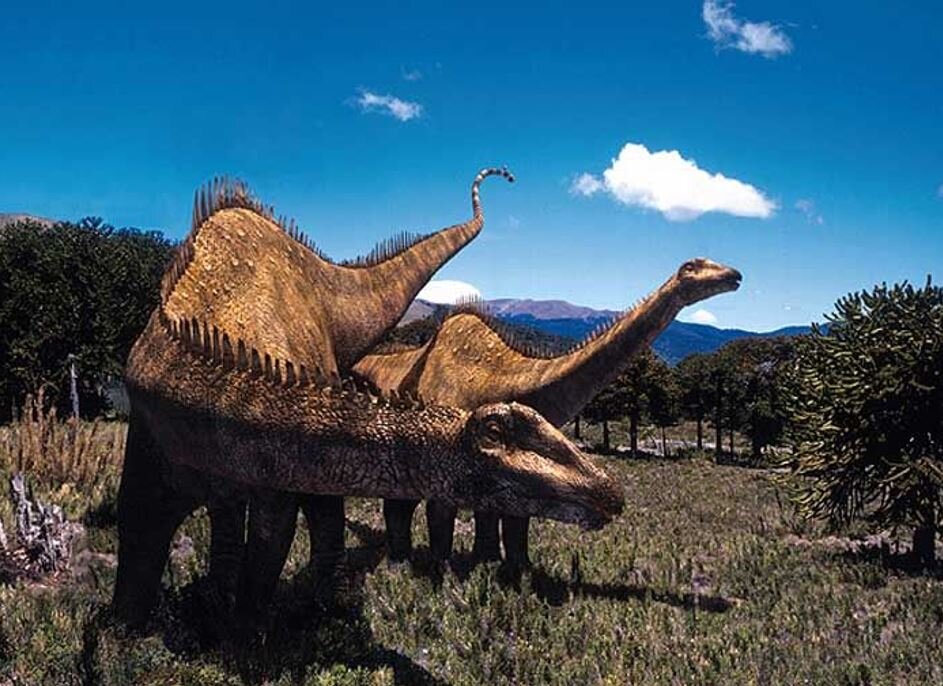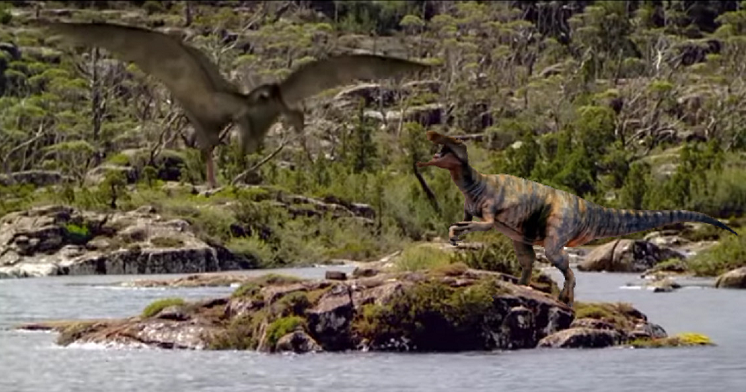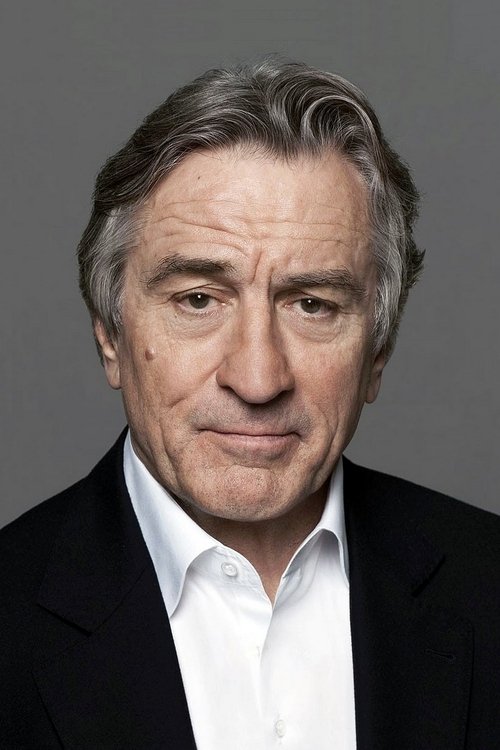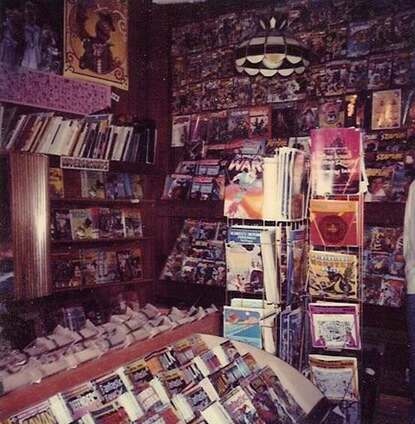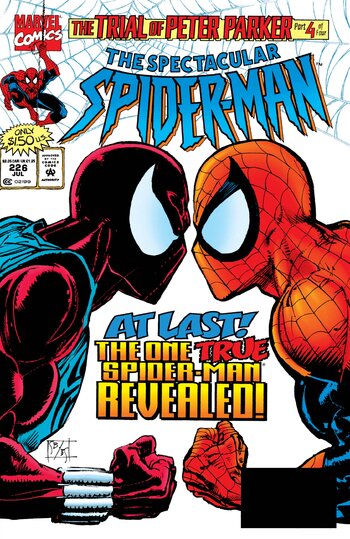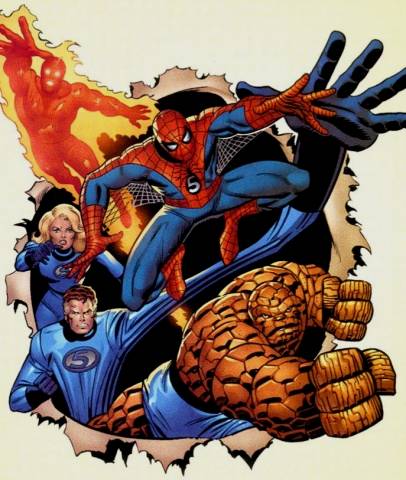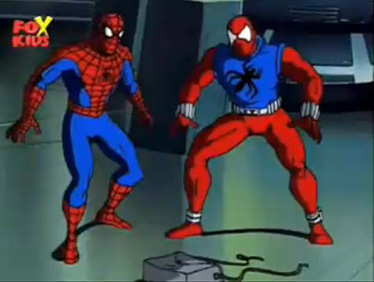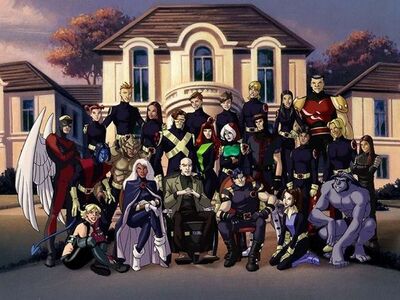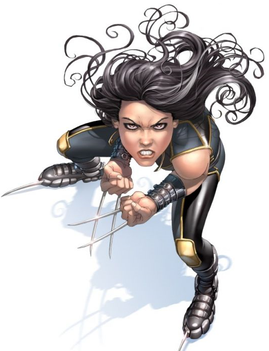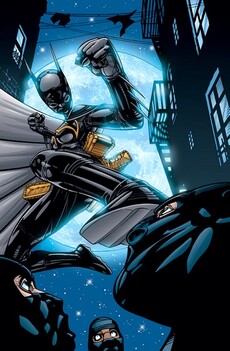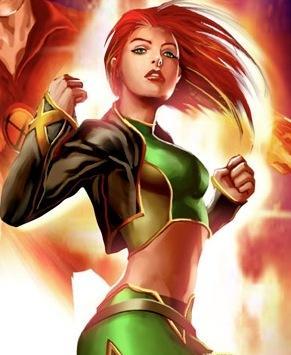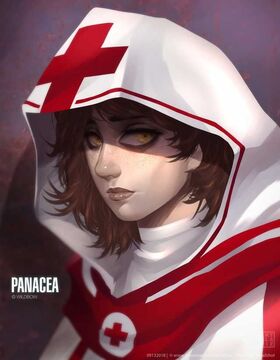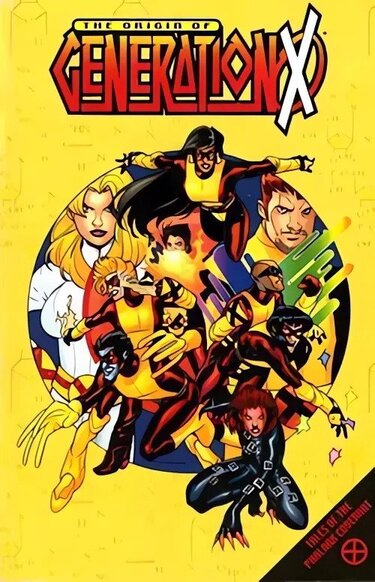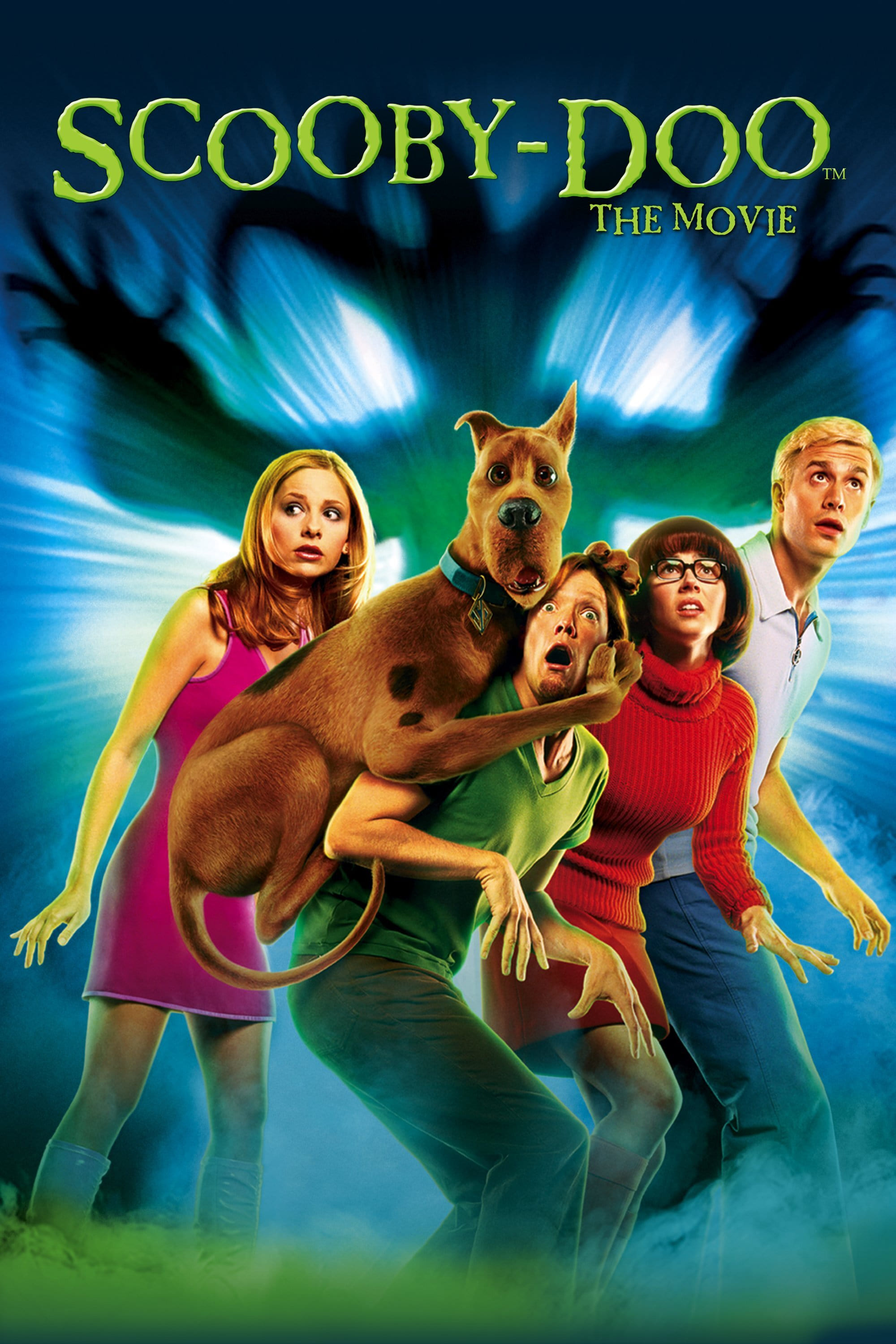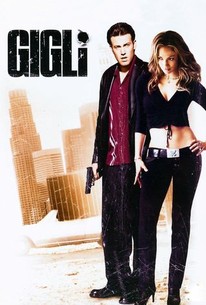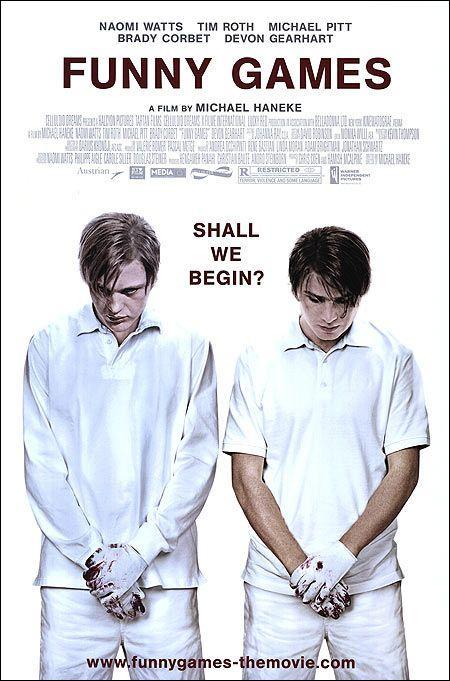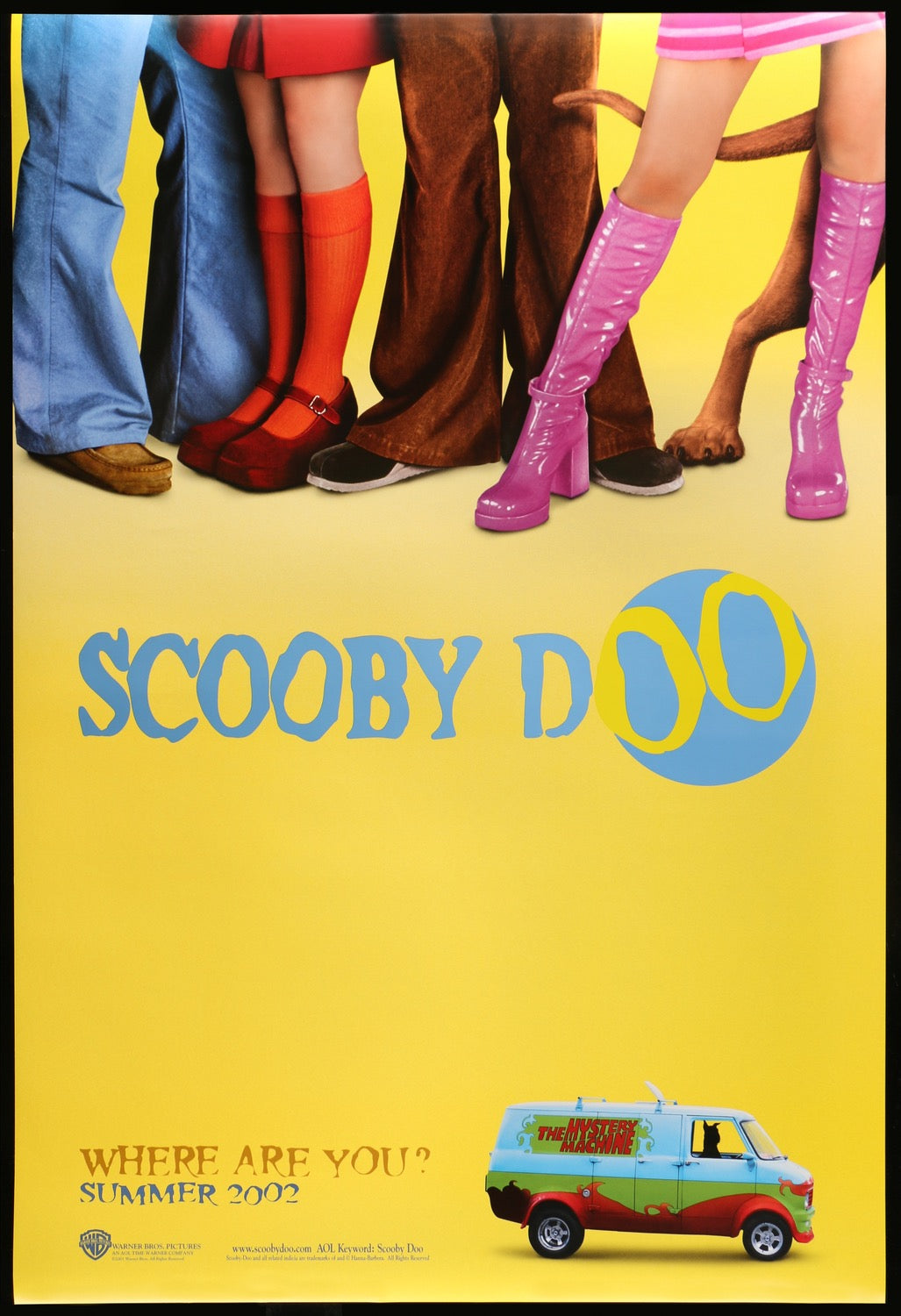So if you’ve been reading the timeline for a while, you probably remember reading a few references to a “Sabotage 35”. The following post was a guest post I wrote a few months back that was supposed to be in the main timeline but got lost in the shuffle. It basically goes over a bit further into the making of Heart and Soul + Spirit of the West and explains the whole deal with the Sabotage 35.
---
A Guest Post by @Nerdman3000
When I attended CalArts in 2005, we once had a guest lecturer in one of my courses by the name of Randy Haycock. Haycock is someone who you may have heard of through his work on a number of animated films he has been involved in order the years. To name just a few examples of some films he’s worked on, at Disney, he served as an animator for a number of Roger Rabbit shorts, as well as an animation assistant on Aladdin and The Little Mermaid, before he eventually moved on from the company during the 1994 mini-Disney exodus, and eventually contributed as a lead animator in the making of various animated films you might recognize, such as Heart and Soul, City of Gold, and The League of Extraordinary Gentlemen.
As you can tell, Haycock was very much an experienced animator in the industry by 2005, and thus a rather big star guest lecturer for us meager students.
Now the reason I bring this up is there’s a quote I always remember from listening to Haycock’s lecture that day in class, which I’ve long since taken to heart to and which relates to today’s post:
“When things are down and your facing pressure from up high in the studio chain, you’re going to be faced with a choice in how you decide to respond to that pressure and how you allow it to affect your work as you move forward with the film you’re currently creating. A choice between pushing through that pressure and striving to make a great film, or a choice to allow that pressure to break your morale and ultimately the film itself. My only advice on what you should do is this: Give the film your heart and soul, not your spirit.”
As you might imagine, Haycock was no doubt speaking directly from experience with that last quote, with his rather unsubtle reference to the behind the scenes of 1996’s Heart and Soul and 1997’s Spirit of the West.

Randy Haycock, a former employee of Disney who would leave the company in 1994 and go one to become a major artist for Hollywood Animation, and one of the lead animators for 1996’s Heart and Soul. (Source: 50mostinfluentialdisneyanimators.wordpress.com)
In truth, there are few films out there which provide such a clear contrast as to how two different groups of filmmakers can react to and work under intense pressure than with the behind-the-scenes production of Heart and Soul and Spirit of the West. Both films, which were created by Hollywood Animation, went into production nearly simultaneously, with Heart and Soul being green-light mere weeks before Michael Eisner’s fall from grace at Hollywood Studios and Spirit of the West getting its own greenlight almost immediately after Katzenberg’s ascension to becoming Eisner’s replacement.
However, as you might be aware if you’ve read my recent retrospective on the making of Heart and Soul, Hollywood Animation found itself facing a dark and uncertain future between 1994 to 1996, as a newly empowered Jeffrey Katzenberg did little to hide the fact that he had little love for Hollywood Animation and saw it as a unhappy reminder of his time under Eisner’s boot, and what’s more, was even outright considering shutting the whole studio down.
It was only internal politics and backlash that resulted from Eisner’s heart attack and Katzenberg’s perceived role in causing it that which ultimately forced Jeffrey Katzenberg’s to stay his hand, but with it quickly becoming clear to everybody working at the studio that the continued survival of the studio rested on the release of 1996’s Heart and Soul and how well it performed, an undeniable dark cloud settled over the studio.
In the case of Heart and Soul, Randy Haycock and the animators working on the film responded to the pressure of having the very fate of the studio on their shoulders by working their hardest to create the best film that they could, putting their very heart and soul (no pun intended) into the making the film, all with the hopes that their hard work and dedication would be rewarded when the film released. In many ways, it’s the pinnacle example in my eyes of how a group of creators should respond when faced with such hard pressure from up top.
Yet as much as Heart and Soul showed the way a team of creators could work well and make gold despite the pressures they are put under, the same could not be said for its sister film, Spirit of the West. The film, which released a mere four and a half months after Heart and Soul, would suffer a bit of a tumultuous production that culminate in one of its directors getting fired, another forced to resign, and 35 artists blacklisted by the industry in one of the most infamous moments in animation history.
The film Spirit of the West, which began production reportedly based on an idea by Jeffrey Katzenberg, was a bit of a passion project on Katzenberg’s part. As Katzenberg tells it, he came up with the idea for the film in 1992, after which he presented it to writer John Fusco, a man best known for his work in the Western and Native American genre. Fusco, having loved Katzenberg’s story, immediately began writing (with Katzenberg’s blessing) an original novel based on Katzenberg’s story, which he finished and then adapted as a screenplay.

Western and Native American Genre Writer John Fusco, whom Jeffrey Katzenberg would work with write the screenplay of Spirit of the West. (Source: IMDB)
Presenting both the finished novel and screenplay to Katzenberg in 1994, Katzenberg in turn presented both to Michael Eisner immediately after, hoping to get it greenlit so that Hollywood Animation would be able to begin production on it right after the soon to be released Retriever.
However, instead of greenlighting it as Katzenberg no doubt hoped, Eisner reportedly laughed upon being told it was based on an original story envisioned by Katzenberg which starred horses as the story’s protagonists. Mocking Katzenberg and dismissing his “little horse film” without even bothering to read it, Eisner instead made it clear he would be going with a very different pitch that had come across his desk and which had been brought to him by new animators over from Disney, one based on the Greek Mythological tale of Eros and Psyche.
For Jeffrey Katzenberg, the meeting had overall been a humiliating disaster which left him furious and trembling with rage, and supposedly almost got him to outright consider quitting. Instead of quitting however, Katzenberg planned revenge and those plans of revenge led him to seek out ABC Network Group head Robert ‘Bob’ Iger, another rival of Eisner, with the two working to conspire to take down Michael Eisner once and for all. The subsequent successful release of Retriever and the fight to take credit for it would provide Katzenberg and Iger with the opportunity they needed, as Eisner’s own attempts to use its success to eliminate Katzenberg and Iger would backfire on him.
Yet Katzenberg and Iger would find themselves with little time to celebrate their victory over their hated rival, as Eisner’s subsequent heart attack left the two at the center of the blame by the rest of the studio’s various heads and the studios own CEO Thomas Murphy.
Finding himself smeared by blame and his reputation blackened by Eisner’s heart attack, with his chances at receiving a potentially once earmarked Chief Creative Officer position in the future having seemingly now faded into dust, Jeffrey Katzenberg rose to the position of head of the Hollywood Studios Group a very bitter and spiteful man.
That he could not even openly direct his spite at the Eros and Psyche pitched film that Eisner had chosen to green light over his own “little horse film” due to Murphy offering it his protection out of guilt over Eisner’s heart attack and a desire to protect the last of Eisner’s legacy at the company no doubt increased Katzenberg’s own ire and sense of spite at the animation studio he once worked at. Still, with Hollywood Animation no going anywhere for at least two to three more years, and Katzenberg now calling the shots, he was quick to call up John Fusco and inform him that Hollywood animation would be moving ahead with their adaptation of Spirit of the West, to release in April 1997 as a follow-up to 1996’s Heart and Soul (then still known as by it's working title, Eros and Psyche).


The two films Hollywood Animation would work on in the post-Eisner world. The former would be a original film compared to OTL based on the Greek Mythological tale of Eros and Psyche while the later would be an earlier version of OTL 2002's Spirit: Stallion of the Cimarron, which was made by Dreamworks and Katzenberg. (Source for Image 1: Goodreads.com - Eros + Psyche by Myrto Gkiouli and Eirini Skoura [1]) (Source for Image 2: rateyourmusic.com)
If that had been the end of Katzenberg letting his spite at the animation studio and Eisner cloud things, perhaps things later on might have been very different, but we will never know, for when Jeffrey Katzenberg called up Marjorie Cohn, a former executive at Nickelodeon and his replacement as head of Hollywood Animation, for their first meeting, he made no secret of the fact that he would be deciding the fate of Hollywood Animation and whether or not to close the studio, based on the performance of Eros and Psyche.
The psychological effect this news had on the animators over at Hollywood Animation cannot be understated and it is clear the effect it had was even more so. As previously stated, for the animators working on Eros and Psyche, the pressure the news created led them to both seek to prove themselves and ensure the best possible film they could make would be released, one which they hoped we succeed and allow the studio to live another day. For Spirit of the West however, a film that unlike its sister film had Katzenberg’s full backing behind it, the threat on the animation studio’s future would backfire.
To say that few animators at the studio wanted to work on the film after Katzenberg’s ultimatum was an understatement. Many animators, who already didn’t have the greatest opinions of Jeffrey Katzenberg after their years of working with him and his egotistical personality, were left angry and bitter by Katzenberg’s decree. Those assigned to work on Katzenberg’s “little horse film” were often quite vocal in their disgust and annoyance at having been assigned to it, unhappy at the thought that they would have to work on Katzenberg’s little passion project while their fate was being decided by another team working on a different film. Everyone working on Spirit of the West it seems, dreaded the thought that they’d be working on the film only for Eros and Psyche to fail and then get told that they would be getting fired when they finished working on Spirit of the West.
With their fate uncertain and literally out of their own hands, it was clear that the spirits of the animators assigned to the film were down, with more than a few employees deciding to voice their unhappiness by walking out and leaving the studio entirely. To them, if they were going to eventually get fired either way, then they would rather leave and take fate into their own hands, rather than waste time working on what they deemed Katzenberg’s stupid “little horse film” and suffer the possible indignity of having to be informed four months before it released that they were being fired after they finished the movie.
That wasn’t the only way that the animators showed their disgruntlement and displeasure however. More than few other artists and animators, despite being assigned on Spirit of the West, would reportedly even go as far as to often ignore the fact they were supposed to work on Spirit of the West and instead spent some of their time working on material for Eros and Psyche. Furthermore, the majority of the film’s animators would also secretly sign a collective agreement that they would all walk out and quit if Eros and Psyche failed and Katzenberg decided to close the studio [2].
Marjore Cohn, who tried to provide the disgruntled artists with a patient voice and ear that was willing to listen and bring voice to their concerns, made no secret that for all that she understood their anger and was on their side, she could not and would not tolerate the animators allowing their anger to go too far, nor that she would tolerate any reported incidents of an artist assigned to Spirt of the West instead spending time working on a film they weren’t supposed to. While most cases of the such were never reported and thus most animators engaging in it managed to get away with doing it [3], Cohn nonetheless found herself with the hard task of trying to get the film’s artists in line and ready to commit, lest they bring Katzenberg’s wrath down on their heads and ensure the closure of the studio anyways, no matter if Eros and Psyche was a success or not.
Yet Cohn, who often found herself paying more mind to the progress on Eros and Psyche due to Katzenberg’s fatal demand, would not always succeed to get the film’s artists to behave and try to avoid Katzenberg rage being turned against them. No case of that was more especially true than in the infamous "Jeff the Golden Retriever/Saboteur 35" incident.

Colonel Michaels, as he looked in the original movie from our timeline, where he was simply known as the Colonel. Here he is pointedly meant to resemble Michael Eisner. (Source: Wikia.com)
As the story goes, in 1995 stories began to reach Katzenberg’s ears that a few of the animators had decided to sneak in a not-so-subtle and rather obvious open slam at Katzenberg in the film by giving the film’s villain, the short but cruel Colonel Michaels [4], a rather cowardly but “so ever loyal” Golden Retriever named Jeff, whom he keeps rather prominently with him but who “always comes back asking for more treats when he’s not too busy cowering from my horse” [5]. In Katzenberg’s eyes, the fact that Colonel Michaels was himself meant to be intentional jab at Eisner only made the situation worse [6]. With Cohn and most of the studio (with the rather obvious exception of Katzenberg), putting the majority of their focus on Eros and Psyche and trying to ensure it would succeed, it had managed to completely slip by a mostly distracted Cohn.
Immediately summoning Cohn to his office, a furious Katzenberg proceeded to vocally rant and unleash his fury at the unsuspecting woman who had herself been caught out of leftfield and unawares by the whole situation. For two hours, everyone in the vicinity were able to hear Jeffrey Katzenberg’s and Marjore Cohn’s shouting match, and by the end of it, Katzenberg would nearly threaten to fire Cohn herself. Ultimately though, Katzenberg stayed his hand, instead informing Cohn that if she wanted him to give her the benefit of the doubt toward her pleas of innocence, that she would have to prove herself and fire those responsible.
Cohn, herself enraged and feeling betrayed over the whole thing, eagerly did upon exiting Katzenberg’s office, and she knew just who to confront first, Eric Darnell, one of the two co-directors on the film.
As Darnell would later admit in an interview in late 2010 where he discussed the incident before the release of his upcoming animated film adaptation of the Red Riding Hood story, Hood and the Wolf, he and the film’s other director Kelly Asbury had both been very much aware of inclusion of “Jeff the Golden Retriever”, but of the two men, only Darnell had gone as far as to give the animators responsible his open encouragement, approval, and blessing over the whole thing [7]. Yet while Darnell and Asbury had both been fully aware of the dog and his significance, Cohn herself had not.
Due to the fact that Cohn hadn’t really been involved in the making of Retriever, due to only being brought in only after Eisner got booted and Katzenberg promoted, she thus hadn’t thus been aware of the significance of the use of a golden retriever and why that would piss off Katzenberg so much. As a result, when Cohn first noticed the animators were adding a golden retriever to the film, the inclusion hadn’t set off any alarms when it was brought up to Cohn. To make matters worse, Darnell would shamefully admit that he had played a role in keeping it that way, as the one-time Cohn had ever gotten curious and bothered to ask why they were introducing a dog into the film, Darnell had decided to inform her that it was meant as nothing more than a nod/easter egg towards their previous film Retriever, which the unknowing Cohn had accepted and taken at face value.
It's thus fair to say that when Cohn ultimately realized that Darnell had straight up lied to her face about the “stupid dog”, she was left enraged. Quickly confronting Darnell over the incident and his lying, a slightly guilty Darnell, who hadn’t intended for Cohn to get in trouble over the whole thing, would finally confess, leading to the exposure of the 35 artists who had been involved. Yet as Cohn and even Darnell would discover in the resulting investigation, those 35 animators who had been involved hadn’t only been guilty of the one crime of sabotage, but others as well.

While a few rumors would swirl for a number of years afterwards that Cohn had actually been aware of the inclusion of Jeff the Golden Retriever the entire time, it would ultimately be disproven years later by Eric Darnell, during a 2010 interview. (source: IMDB)
As she found out, the 35 animators had, rather than agree to walk out if Katzenberg closed the studio as the other artists on the film had done, instead made a separate secret agreement to do everything in their power to quietly sabotage the film as an act of revenge against Katzenberg, whom they were convinced would go through with his promise to close the studio. Furthermore, they had promised each other that if Katzenberg did go through with closing the studio after the release of Eros and Psyche, that they would escalate their sabotage out into the open and do their best to literally destroy the film itself, even if it meant destroying every bit of material created for the film and costing the studio millions.
Some of this quiet sabotage, as Cohn learned, wouldn’t be limited to the inclusion of Jeff the Golden Retriever, but would include multiple frames of the film having subtle details added to the background that were clearly meant to add to the list of insults or worse toward Katzenberg.
Assigning 7 animators to help her comb through multiple frames of the film, Cohn and the artists would discover plenty of such insults and other details hidden [8] in dozens of frames. Examples of this included a piece of writing on a stone wall that would be discovered in the background of one scene which clearly said “Jeff Katz is a Dick”, while another example was a scene of an out of focus Jeff the Golden Retriever in the background corner who was openly taking a dump next to a squirrel which is holding a paint brush and tablet and wearing a painter beret on its head.
The worst examples of the quiet sabotage they would discover however, were the one’s not relating to Katzenberg at all.
One such case was the discovery that multiple frames were discovered to include a number of pornographic images that were added on to the background [9], some of which included multiple cutout images taken from Pamala Anderson’s five previous stints on Playboy as well as a few cutouts from the recent and then still controversial first stints on the magazine by Drew Barrymore, as well as a number of cutouts from Lara Whitehall’s famous (or infamous, as some would argue) 1987 appearance on the magazine [10], while another was the inclusion of multiple nude male and female Native Americans in a few out of focus shots in the background of Lakota village (two of whom could be seen even engaging in sexual intercourse), as well as a few crude drawings hidden throughout. Others egregious examples included multiple racist and sexist imagery that left Cohn and most of the animators horrified and disturbed.
Ultimately however, the worst act of sabotage of all was the discovery that a small number of once thought completed frames as well as a number of finished audio recordings, which had all been stored in preparation for them to eventually be rendered together in post-production, had been found to be either outright tampered with or even missing. It would be later revealed that one of the 35 artists had decided not to seemingly wait until Katzenberg fired them and closed the studio, but to begin the promise of literally trying to destroy the film early. In doing so, the other 34 artists found their already destroyed reputations further blackened by association, while the studio for forced to redo each of those frames entirely, costing them millions.

Marjore Cohn, the new head of Hollywood Animation following Katzenberg's promotion, would find herself given the task of having to lead Hollywood Animation during one of it's darkest times, and the thankless task of uncovering the damage left by the “Saboteur 35”. (source: newsonwomen.typepad.com)
Even to the other artists working on the film who weren’t involved, the discovery’s made by Cohn and those tasked with searching the film’s various frames made it clear that the “Saboteur 35”, as the 35 fired animators were now being called, had gone way too far in handling their grudge with Katzenberg and the film. The 35 would find themselves quickly fired, with their reputations forever blackened by their acts of sabotage and all of them blacklisted by the entire industry [11]. The majority of them would never work as an animator or artist in any professional animation studio ever again.
As for the film’s two directors who had let things go this far, they too would not escape unscratched. Eric Darnell, though he would not have been involved in the other acts of sabotage (only the “Jeff the Golden Retriever” incident), he was quickly blamed by both Cohn and Katzenberg for allowing the artists to get away with their sabotage by looking the other way, or in the case of a certain dog, even outright encouraging some of it. Darnell, as Cohn especially made clear, had allowed the artists to get away with as much as they did, and worse than that, he had broken her trust by straight up lying to her face. He was ordered to pack his things and get out of the studio, with Tim Johnson being brought on to replace him [12].
As for the film’s other director, Kelly Asbury, while he hadn’t gone as far as Darnell and encouraged some of the actions of the “Saboteur 35”, he had openly and willfully ignored it. While he would not be fired by Cohn, he would be asked to resign as director on Spirit of the West, which he did, being replaced soon after by Bibo Bergeron.
The incident overall left a bitter taste in Cohn and Katzenberg’s mouths, as well as the mouths of the Hollywood Studios Group and ABC as a whole, just as it left the remaining artists on the film stunned and uneasy as they rapidly worked to redo all the scenes which the “Saboteur 35” had effected or destroyed. While Katzenberg certainly could have used the whole mess to justify pulling the plug on Hollywood Animation as a whole at this point, Katzenberg ultimately did not. Why this was, it has never been made clear, although it’s believed to ultimately have been the combined pleas of Marjore Cohn and John Fusco (the later of whom Cohn called up to try and help in her attempts to convince Katzenberg, due to Katzenberg's known respect and fondness for the man) that stayed his hand.
Yet though Katzenberg would not close the studio as feared, he nonetheless made it clear to Cohn that there would be no more second chances for the studio. They had reached the last straw, and if Eros and Psyche wasn’t a success, he would be pulling the plug.
So it was that as a dark cloud which had settled over the animation studio got even darker, the studio would find itself having to move forward from the entire mess, with the possible axe over their heads inching ever closer. Marjore Cohn, herself left quite troubled by the whole incident, became determined to nonetheless guide the animation studio out of the darkness and provide a guiding light for her animators as they moved forward.

Bibo Bergeron and Tim Johnson, who would both replace Eric Durnall and Kelly Asbury as directors for Spirit of the West. (Source: Google Images and IMDB - Cropped and Spliced together into one Image by @Nerdman3000)
Assembling animators from both of the studio’s animation teams, for seven straight hours Cohn, joined by Spirit of the West new directors Tim Johnson and Bibo Bergeron, as well as Eros and Psyche directors Pixote Hunt and Steve Hickner, would speak directly to the studios animators, hearing and responding to each and all their concerns, doing their hardest to not only get everyone on the same page, but to get everyone to move forward and, most especially in the case of the animators responsible for making Spirit of the West, try to move past their own bitterness and hard feelings toward the film.
As new director Tim Johnson would quickly made it clear to the artists working under him, as much as he himself had little love for Katzenberg either, he wouldn’t tolerate another situation like what had happened with the “Sabotage 35” to ever happen again or for the animators risking all their jobs by giving Jeffrey Katzenberg another reason to close the studio. As far as he concerned, it was time for them to move past their grudges and try to go to work on trying to actually make a decent film.
Though they did not forget the ever-hanging threat placed over them by the ever-remaining threat of Jeffrey Katzenberg hanging over them, it would be with a new spirit of purpose guiding them that the animators working on both Eros and Psyche and Spirit of the West would strive to move forward.
Yet as Hollywood Animation moved to try and guide themselves out of the darkness and push themselves into the light, the animators at studio would soon find themselves having to experience another major shakeup as rather big change up top at the executive level brought with it a new set of owners following a merger with Universal. With the dice of fate thrown once again, the animators could only pray fate would deal them a good hand.
As luck would have it though, they would indeed steer themselves out of even that potential moment of doom and fate would further shine down on them when Eros and Psyche (later renamed to Heart and Soul) eventually released as a massive box office hit.
I’d say more, but I’ve already taken much of your time with this rather longwinded post, so we’ll leave that as a story for another day.
---
[1] - A fun little book I'd recommend for anyone who's a fan of the myth in question. The character designs for Eros and Psyche here are also close to what I'm imagining for them both looking like in the final ITTL film.
[2] – Ultimately, their intensions are that if Katzenberg shuts them, they would shut down his beloved passion project in return, and hopefully get enough attention to get Katzenberg in trouble as well.
[3] – One rather funny but famous/infamous case of this happening would be the case of Ian Gooding. Gooding, one of the various animators who had left Disney in the exodus of 1994, would infamously, despite the fact he was technically assigned to work on the film, go as far as to not create a single drawing for Spirit of the West and instead worked the entire time on Heart and Soul, even being responsible for making the final character design for the character of Zephyr.
Gooding, despite not being supposed to work on the film, managed get away with it due to the fact that A) not one person on both teams who knew (and there weren’t many who did) ever reported on him, especially since he wasn’t the only person assigned to Spirit of the West who was instead contributing on Heart and Soul (unlike Gooding though, everyone else that was doing it was at least also taking the time to actually work on Spirit of the West), B) he was quiet about it and avoided letting anyone know, and C) the production of both films, especially Spirit of the West, was so stressful and hectic for many involved that few in the leadership bothered to worry about distracting themselves with stuff like that unless it got reported to them.
Since no one either knew or was letting him get away with it, Gooding managed to eventually even get his name snuck into the film’s credits as one of the main animators for Heart and Soul, rather than being placed in a small section the film’s credit that the film’s producers decided to devote to the film’s unofficial contributing artists from Spirit of the West. By the time Heart and Soul finished, so few people remembered that he was supposed to be working on Spirit of the West this entire time, least of all the film’s own new directors Tim Johnson and Bibo Bergeron, that no one seemed to question that idea that he was part of the animation team for Heart and Soul.
Gooding himself would not openly admit what he did until years later during the making of The League of Extraordinary Gentlemen, and by then, he had already found himself in the humorous position of having been listed as a background and character artist in the ending credits for Spirit of the West due to be on the ‘official crew list’ document, despite having never actually worked on the film.
[4] – Known simply as The Colonel in the OTL film and OTL/ITTL novel. Katzenberg, still so recently seething at Eisner, uses The Colonel the same way he used Lord Farquaad in our timeline to get back and make fun of the man, as he believes he can more easily get away with it due to CEO Thomas Murphy not really paying as much attention to Spirit of the West as he is Heart and Soul.
[5] – The disgruntled animators would go even further when they then had Jeff’s cowardice be the central reason that allows Spirit and Little Creek to finally escape the fort where they were held captive by the US Army. Later, during the film’s ending, the animators also wanted to have it so that when Colonel Michaels and his cavalry chase Spirit and Little Creek through the Grand Canyon, the cowardly Jeff would seemingly find that his loyalty to his master is greater than his cowardice, as he ends up choosing to jump into the gorge after his beloved master when the latter falls to his death. Ultimately though, the art for the Jeff’s death was never completed.
[6] – In the OTL film and in the OTL/ITTL novel by Fusco, he is clearly meant to invoke George Armstrong Custer, in both character and appearance. For the ITTL film however, Katzenberg openly demands the film’s animators base his design and appearance off of Michael Eisner, as well as give him the name Colonel Michaels.
[7] – Kelly Asbury meanwhile was content to ignore the whole thing and look the other way.
[8] - One artist would go as far as to write a hidden message in multiple frames that when combined together revealed a longwinded right-wing antisemetic rant that attacked everything from Katzenberg, Disney and Jim Henson, Al Gore, and strangely JFK Jr.
[9] – A similar occurrence happened in real life with the 1977 film ‘The Rescuers’, where one frame had an image of a topless woman hidden in the background. It went undiscovered for 20 years and was only ever discovered when the film was released on VHS in the 1990’s and people could pause the movie. Disney was eventually forced to do a recall of all VHS copies for the film in January 1999 as a result.
[10] – While Drew Barrymore and Pamela Anderson are the same as OTL, Lara Whitehall is quite obviously not. For those who don’t remember her or know who she is, Lara Whitehall is the ITTL second stage name of Lora Mumford, or as you might otherwise recognize her by her first stage name when she was the lead singer for Halyx, Lora Ranger.
As you may remember from the post about Halyx in the first book of the Hensonverse, Lora left the band in 1984 (which was far more successful in our timeline) and formed an all-female band called Sunset Strip. As mentioned in the chapter in question, Lora (or Lara Whitehall, which would be her new stage name after forming Sunset Strip) would get into a bit of controversy when she and her bandmates got caught in 1987 with illegal substances in their possession. The ‘scandal’ of a Disney Diva getting caught with drugs only helped her rock star career though, and as revealed in this chapter, she would follow the controversy up by, at a bit of pressure from her manager, posing nude for Playboy Magazine in June 1987.
The famous (though some might prefer to call it infamous) cover of the issue, which would become quite iconic ITTL as one of the most memorable covers ever featured for the magazine, would feature a smirking Lora with an upturned cigarette in her mouth, dressed in nothing but her old Halyx Lora Ranger jacket, which is opened up to leave her chest completely exposed. To complete out the risqué image, Lora would don a now iconic ITTL custom-made letter red (to match her Halyx jacket) Minnie Mouse ears headband on her head, one which had an only slightly lighter red bowtie that was changed slightly to feature what resembled the Playboy bunny ears.
You can hear more about that and how Lora’s life turned out ITTL over here in Play Along from Home, our guest-post thread for the Hensonverse as a whole, in a guest post written once again by @Nerdman3000!
[11] – A number of the artists would desperately try to head over to Columbia to join up with Eisner/Bluth, to no success. While Eisner and Bluth might have been willing to excuse the initial “Jeff the Golden Retriever” character (which they found hilarious and would often use afterwards to mockingly refer to Katzenberg), even they had to draw the line with all the acts of sabotage on a film the group enacted and further planned to do, especially with one of the artists actual attempts to destroy the film itself.
Their decision to refuse to hire them would only be made easier when Ted Turner, upon hearing the whole story and learning that the group had tried to then get hired at Columbia, told Eisner that, and I quote, “I sure as hellfire don’t want those little damn two-faced punks anywhere near in my goddamn studio.”
[12] – Eric Darnell reportedly never blamed Cohn for firing him, as he realized he had ultimately forced her hand and into that situation and that he had deserved it.
As for his future, the fact Darnell at the very least wasn’t one of the people who signed the infamous “Sabotage Agreement” and that it seemed like he only knew about the “Jeff the Golden Retriever” addition meant that he at the very least was able to eventually find work at Columbia with Eisner/Bluth as a low-level artist. It wouldn’t be until 2010 ITTL that he would finally (Spirit of the West would have been his original first stint as a director ITTL) get to direct his first animated film, Hood and the Wolf.
----
And that’s that. Hope you enjoyed this very long post.
---
Trouble in Western Hollywood
Post from Animation, Stories, and Us Net-log, by Rodrick Zarrel, September 22nd, 2012A Guest Post by @Nerdman3000
When I attended CalArts in 2005, we once had a guest lecturer in one of my courses by the name of Randy Haycock. Haycock is someone who you may have heard of through his work on a number of animated films he has been involved in order the years. To name just a few examples of some films he’s worked on, at Disney, he served as an animator for a number of Roger Rabbit shorts, as well as an animation assistant on Aladdin and The Little Mermaid, before he eventually moved on from the company during the 1994 mini-Disney exodus, and eventually contributed as a lead animator in the making of various animated films you might recognize, such as Heart and Soul, City of Gold, and The League of Extraordinary Gentlemen.
As you can tell, Haycock was very much an experienced animator in the industry by 2005, and thus a rather big star guest lecturer for us meager students.
Now the reason I bring this up is there’s a quote I always remember from listening to Haycock’s lecture that day in class, which I’ve long since taken to heart to and which relates to today’s post:
“When things are down and your facing pressure from up high in the studio chain, you’re going to be faced with a choice in how you decide to respond to that pressure and how you allow it to affect your work as you move forward with the film you’re currently creating. A choice between pushing through that pressure and striving to make a great film, or a choice to allow that pressure to break your morale and ultimately the film itself. My only advice on what you should do is this: Give the film your heart and soul, not your spirit.”
As you might imagine, Haycock was no doubt speaking directly from experience with that last quote, with his rather unsubtle reference to the behind the scenes of 1996’s Heart and Soul and 1997’s Spirit of the West.

Randy Haycock, a former employee of Disney who would leave the company in 1994 and go one to become a major artist for Hollywood Animation, and one of the lead animators for 1996’s Heart and Soul. (Source: 50mostinfluentialdisneyanimators.wordpress.com)
In truth, there are few films out there which provide such a clear contrast as to how two different groups of filmmakers can react to and work under intense pressure than with the behind-the-scenes production of Heart and Soul and Spirit of the West. Both films, which were created by Hollywood Animation, went into production nearly simultaneously, with Heart and Soul being green-light mere weeks before Michael Eisner’s fall from grace at Hollywood Studios and Spirit of the West getting its own greenlight almost immediately after Katzenberg’s ascension to becoming Eisner’s replacement.
However, as you might be aware if you’ve read my recent retrospective on the making of Heart and Soul, Hollywood Animation found itself facing a dark and uncertain future between 1994 to 1996, as a newly empowered Jeffrey Katzenberg did little to hide the fact that he had little love for Hollywood Animation and saw it as a unhappy reminder of his time under Eisner’s boot, and what’s more, was even outright considering shutting the whole studio down.
It was only internal politics and backlash that resulted from Eisner’s heart attack and Katzenberg’s perceived role in causing it that which ultimately forced Jeffrey Katzenberg’s to stay his hand, but with it quickly becoming clear to everybody working at the studio that the continued survival of the studio rested on the release of 1996’s Heart and Soul and how well it performed, an undeniable dark cloud settled over the studio.
In the case of Heart and Soul, Randy Haycock and the animators working on the film responded to the pressure of having the very fate of the studio on their shoulders by working their hardest to create the best film that they could, putting their very heart and soul (no pun intended) into the making the film, all with the hopes that their hard work and dedication would be rewarded when the film released. In many ways, it’s the pinnacle example in my eyes of how a group of creators should respond when faced with such hard pressure from up top.
Yet as much as Heart and Soul showed the way a team of creators could work well and make gold despite the pressures they are put under, the same could not be said for its sister film, Spirit of the West. The film, which released a mere four and a half months after Heart and Soul, would suffer a bit of a tumultuous production that culminate in one of its directors getting fired, another forced to resign, and 35 artists blacklisted by the industry in one of the most infamous moments in animation history.
The film Spirit of the West, which began production reportedly based on an idea by Jeffrey Katzenberg, was a bit of a passion project on Katzenberg’s part. As Katzenberg tells it, he came up with the idea for the film in 1992, after which he presented it to writer John Fusco, a man best known for his work in the Western and Native American genre. Fusco, having loved Katzenberg’s story, immediately began writing (with Katzenberg’s blessing) an original novel based on Katzenberg’s story, which he finished and then adapted as a screenplay.

Western and Native American Genre Writer John Fusco, whom Jeffrey Katzenberg would work with write the screenplay of Spirit of the West. (Source: IMDB)
Presenting both the finished novel and screenplay to Katzenberg in 1994, Katzenberg in turn presented both to Michael Eisner immediately after, hoping to get it greenlit so that Hollywood Animation would be able to begin production on it right after the soon to be released Retriever.
However, instead of greenlighting it as Katzenberg no doubt hoped, Eisner reportedly laughed upon being told it was based on an original story envisioned by Katzenberg which starred horses as the story’s protagonists. Mocking Katzenberg and dismissing his “little horse film” without even bothering to read it, Eisner instead made it clear he would be going with a very different pitch that had come across his desk and which had been brought to him by new animators over from Disney, one based on the Greek Mythological tale of Eros and Psyche.
For Jeffrey Katzenberg, the meeting had overall been a humiliating disaster which left him furious and trembling with rage, and supposedly almost got him to outright consider quitting. Instead of quitting however, Katzenberg planned revenge and those plans of revenge led him to seek out ABC Network Group head Robert ‘Bob’ Iger, another rival of Eisner, with the two working to conspire to take down Michael Eisner once and for all. The subsequent successful release of Retriever and the fight to take credit for it would provide Katzenberg and Iger with the opportunity they needed, as Eisner’s own attempts to use its success to eliminate Katzenberg and Iger would backfire on him.
Yet Katzenberg and Iger would find themselves with little time to celebrate their victory over their hated rival, as Eisner’s subsequent heart attack left the two at the center of the blame by the rest of the studio’s various heads and the studios own CEO Thomas Murphy.
Finding himself smeared by blame and his reputation blackened by Eisner’s heart attack, with his chances at receiving a potentially once earmarked Chief Creative Officer position in the future having seemingly now faded into dust, Jeffrey Katzenberg rose to the position of head of the Hollywood Studios Group a very bitter and spiteful man.
That he could not even openly direct his spite at the Eros and Psyche pitched film that Eisner had chosen to green light over his own “little horse film” due to Murphy offering it his protection out of guilt over Eisner’s heart attack and a desire to protect the last of Eisner’s legacy at the company no doubt increased Katzenberg’s own ire and sense of spite at the animation studio he once worked at. Still, with Hollywood Animation no going anywhere for at least two to three more years, and Katzenberg now calling the shots, he was quick to call up John Fusco and inform him that Hollywood animation would be moving ahead with their adaptation of Spirit of the West, to release in April 1997 as a follow-up to 1996’s Heart and Soul (then still known as by it's working title, Eros and Psyche).

The two films Hollywood Animation would work on in the post-Eisner world. The former would be a original film compared to OTL based on the Greek Mythological tale of Eros and Psyche while the later would be an earlier version of OTL 2002's Spirit: Stallion of the Cimarron, which was made by Dreamworks and Katzenberg. (Source for Image 1: Goodreads.com - Eros + Psyche by Myrto Gkiouli and Eirini Skoura [1]) (Source for Image 2: rateyourmusic.com)
If that had been the end of Katzenberg letting his spite at the animation studio and Eisner cloud things, perhaps things later on might have been very different, but we will never know, for when Jeffrey Katzenberg called up Marjorie Cohn, a former executive at Nickelodeon and his replacement as head of Hollywood Animation, for their first meeting, he made no secret of the fact that he would be deciding the fate of Hollywood Animation and whether or not to close the studio, based on the performance of Eros and Psyche.
The psychological effect this news had on the animators over at Hollywood Animation cannot be understated and it is clear the effect it had was even more so. As previously stated, for the animators working on Eros and Psyche, the pressure the news created led them to both seek to prove themselves and ensure the best possible film they could make would be released, one which they hoped we succeed and allow the studio to live another day. For Spirit of the West however, a film that unlike its sister film had Katzenberg’s full backing behind it, the threat on the animation studio’s future would backfire.
To say that few animators at the studio wanted to work on the film after Katzenberg’s ultimatum was an understatement. Many animators, who already didn’t have the greatest opinions of Jeffrey Katzenberg after their years of working with him and his egotistical personality, were left angry and bitter by Katzenberg’s decree. Those assigned to work on Katzenberg’s “little horse film” were often quite vocal in their disgust and annoyance at having been assigned to it, unhappy at the thought that they would have to work on Katzenberg’s little passion project while their fate was being decided by another team working on a different film. Everyone working on Spirit of the West it seems, dreaded the thought that they’d be working on the film only for Eros and Psyche to fail and then get told that they would be getting fired when they finished working on Spirit of the West.
With their fate uncertain and literally out of their own hands, it was clear that the spirits of the animators assigned to the film were down, with more than a few employees deciding to voice their unhappiness by walking out and leaving the studio entirely. To them, if they were going to eventually get fired either way, then they would rather leave and take fate into their own hands, rather than waste time working on what they deemed Katzenberg’s stupid “little horse film” and suffer the possible indignity of having to be informed four months before it released that they were being fired after they finished the movie.
That wasn’t the only way that the animators showed their disgruntlement and displeasure however. More than few other artists and animators, despite being assigned on Spirit of the West, would reportedly even go as far as to often ignore the fact they were supposed to work on Spirit of the West and instead spent some of their time working on material for Eros and Psyche. Furthermore, the majority of the film’s animators would also secretly sign a collective agreement that they would all walk out and quit if Eros and Psyche failed and Katzenberg decided to close the studio [2].
Marjore Cohn, who tried to provide the disgruntled artists with a patient voice and ear that was willing to listen and bring voice to their concerns, made no secret that for all that she understood their anger and was on their side, she could not and would not tolerate the animators allowing their anger to go too far, nor that she would tolerate any reported incidents of an artist assigned to Spirt of the West instead spending time working on a film they weren’t supposed to. While most cases of the such were never reported and thus most animators engaging in it managed to get away with doing it [3], Cohn nonetheless found herself with the hard task of trying to get the film’s artists in line and ready to commit, lest they bring Katzenberg’s wrath down on their heads and ensure the closure of the studio anyways, no matter if Eros and Psyche was a success or not.
Yet Cohn, who often found herself paying more mind to the progress on Eros and Psyche due to Katzenberg’s fatal demand, would not always succeed to get the film’s artists to behave and try to avoid Katzenberg rage being turned against them. No case of that was more especially true than in the infamous "Jeff the Golden Retriever/Saboteur 35" incident.

Colonel Michaels, as he looked in the original movie from our timeline, where he was simply known as the Colonel. Here he is pointedly meant to resemble Michael Eisner. (Source: Wikia.com)
As the story goes, in 1995 stories began to reach Katzenberg’s ears that a few of the animators had decided to sneak in a not-so-subtle and rather obvious open slam at Katzenberg in the film by giving the film’s villain, the short but cruel Colonel Michaels [4], a rather cowardly but “so ever loyal” Golden Retriever named Jeff, whom he keeps rather prominently with him but who “always comes back asking for more treats when he’s not too busy cowering from my horse” [5]. In Katzenberg’s eyes, the fact that Colonel Michaels was himself meant to be intentional jab at Eisner only made the situation worse [6]. With Cohn and most of the studio (with the rather obvious exception of Katzenberg), putting the majority of their focus on Eros and Psyche and trying to ensure it would succeed, it had managed to completely slip by a mostly distracted Cohn.
Immediately summoning Cohn to his office, a furious Katzenberg proceeded to vocally rant and unleash his fury at the unsuspecting woman who had herself been caught out of leftfield and unawares by the whole situation. For two hours, everyone in the vicinity were able to hear Jeffrey Katzenberg’s and Marjore Cohn’s shouting match, and by the end of it, Katzenberg would nearly threaten to fire Cohn herself. Ultimately though, Katzenberg stayed his hand, instead informing Cohn that if she wanted him to give her the benefit of the doubt toward her pleas of innocence, that she would have to prove herself and fire those responsible.
Cohn, herself enraged and feeling betrayed over the whole thing, eagerly did upon exiting Katzenberg’s office, and she knew just who to confront first, Eric Darnell, one of the two co-directors on the film.
As Darnell would later admit in an interview in late 2010 where he discussed the incident before the release of his upcoming animated film adaptation of the Red Riding Hood story, Hood and the Wolf, he and the film’s other director Kelly Asbury had both been very much aware of inclusion of “Jeff the Golden Retriever”, but of the two men, only Darnell had gone as far as to give the animators responsible his open encouragement, approval, and blessing over the whole thing [7]. Yet while Darnell and Asbury had both been fully aware of the dog and his significance, Cohn herself had not.
Due to the fact that Cohn hadn’t really been involved in the making of Retriever, due to only being brought in only after Eisner got booted and Katzenberg promoted, she thus hadn’t thus been aware of the significance of the use of a golden retriever and why that would piss off Katzenberg so much. As a result, when Cohn first noticed the animators were adding a golden retriever to the film, the inclusion hadn’t set off any alarms when it was brought up to Cohn. To make matters worse, Darnell would shamefully admit that he had played a role in keeping it that way, as the one-time Cohn had ever gotten curious and bothered to ask why they were introducing a dog into the film, Darnell had decided to inform her that it was meant as nothing more than a nod/easter egg towards their previous film Retriever, which the unknowing Cohn had accepted and taken at face value.
It's thus fair to say that when Cohn ultimately realized that Darnell had straight up lied to her face about the “stupid dog”, she was left enraged. Quickly confronting Darnell over the incident and his lying, a slightly guilty Darnell, who hadn’t intended for Cohn to get in trouble over the whole thing, would finally confess, leading to the exposure of the 35 artists who had been involved. Yet as Cohn and even Darnell would discover in the resulting investigation, those 35 animators who had been involved hadn’t only been guilty of the one crime of sabotage, but others as well.

While a few rumors would swirl for a number of years afterwards that Cohn had actually been aware of the inclusion of Jeff the Golden Retriever the entire time, it would ultimately be disproven years later by Eric Darnell, during a 2010 interview. (source: IMDB)
As she found out, the 35 animators had, rather than agree to walk out if Katzenberg closed the studio as the other artists on the film had done, instead made a separate secret agreement to do everything in their power to quietly sabotage the film as an act of revenge against Katzenberg, whom they were convinced would go through with his promise to close the studio. Furthermore, they had promised each other that if Katzenberg did go through with closing the studio after the release of Eros and Psyche, that they would escalate their sabotage out into the open and do their best to literally destroy the film itself, even if it meant destroying every bit of material created for the film and costing the studio millions.
Some of this quiet sabotage, as Cohn learned, wouldn’t be limited to the inclusion of Jeff the Golden Retriever, but would include multiple frames of the film having subtle details added to the background that were clearly meant to add to the list of insults or worse toward Katzenberg.
Assigning 7 animators to help her comb through multiple frames of the film, Cohn and the artists would discover plenty of such insults and other details hidden [8] in dozens of frames. Examples of this included a piece of writing on a stone wall that would be discovered in the background of one scene which clearly said “Jeff Katz is a Dick”, while another example was a scene of an out of focus Jeff the Golden Retriever in the background corner who was openly taking a dump next to a squirrel which is holding a paint brush and tablet and wearing a painter beret on its head.
The worst examples of the quiet sabotage they would discover however, were the one’s not relating to Katzenberg at all.
One such case was the discovery that multiple frames were discovered to include a number of pornographic images that were added on to the background [9], some of which included multiple cutout images taken from Pamala Anderson’s five previous stints on Playboy as well as a few cutouts from the recent and then still controversial first stints on the magazine by Drew Barrymore, as well as a number of cutouts from Lara Whitehall’s famous (or infamous, as some would argue) 1987 appearance on the magazine [10], while another was the inclusion of multiple nude male and female Native Americans in a few out of focus shots in the background of Lakota village (two of whom could be seen even engaging in sexual intercourse), as well as a few crude drawings hidden throughout. Others egregious examples included multiple racist and sexist imagery that left Cohn and most of the animators horrified and disturbed.
Ultimately however, the worst act of sabotage of all was the discovery that a small number of once thought completed frames as well as a number of finished audio recordings, which had all been stored in preparation for them to eventually be rendered together in post-production, had been found to be either outright tampered with or even missing. It would be later revealed that one of the 35 artists had decided not to seemingly wait until Katzenberg fired them and closed the studio, but to begin the promise of literally trying to destroy the film early. In doing so, the other 34 artists found their already destroyed reputations further blackened by association, while the studio for forced to redo each of those frames entirely, costing them millions.
Marjore Cohn, the new head of Hollywood Animation following Katzenberg's promotion, would find herself given the task of having to lead Hollywood Animation during one of it's darkest times, and the thankless task of uncovering the damage left by the “Saboteur 35”. (source: newsonwomen.typepad.com)
Even to the other artists working on the film who weren’t involved, the discovery’s made by Cohn and those tasked with searching the film’s various frames made it clear that the “Saboteur 35”, as the 35 fired animators were now being called, had gone way too far in handling their grudge with Katzenberg and the film. The 35 would find themselves quickly fired, with their reputations forever blackened by their acts of sabotage and all of them blacklisted by the entire industry [11]. The majority of them would never work as an animator or artist in any professional animation studio ever again.
As for the film’s two directors who had let things go this far, they too would not escape unscratched. Eric Darnell, though he would not have been involved in the other acts of sabotage (only the “Jeff the Golden Retriever” incident), he was quickly blamed by both Cohn and Katzenberg for allowing the artists to get away with their sabotage by looking the other way, or in the case of a certain dog, even outright encouraging some of it. Darnell, as Cohn especially made clear, had allowed the artists to get away with as much as they did, and worse than that, he had broken her trust by straight up lying to her face. He was ordered to pack his things and get out of the studio, with Tim Johnson being brought on to replace him [12].
As for the film’s other director, Kelly Asbury, while he hadn’t gone as far as Darnell and encouraged some of the actions of the “Saboteur 35”, he had openly and willfully ignored it. While he would not be fired by Cohn, he would be asked to resign as director on Spirit of the West, which he did, being replaced soon after by Bibo Bergeron.
The incident overall left a bitter taste in Cohn and Katzenberg’s mouths, as well as the mouths of the Hollywood Studios Group and ABC as a whole, just as it left the remaining artists on the film stunned and uneasy as they rapidly worked to redo all the scenes which the “Saboteur 35” had effected or destroyed. While Katzenberg certainly could have used the whole mess to justify pulling the plug on Hollywood Animation as a whole at this point, Katzenberg ultimately did not. Why this was, it has never been made clear, although it’s believed to ultimately have been the combined pleas of Marjore Cohn and John Fusco (the later of whom Cohn called up to try and help in her attempts to convince Katzenberg, due to Katzenberg's known respect and fondness for the man) that stayed his hand.
Yet though Katzenberg would not close the studio as feared, he nonetheless made it clear to Cohn that there would be no more second chances for the studio. They had reached the last straw, and if Eros and Psyche wasn’t a success, he would be pulling the plug.
So it was that as a dark cloud which had settled over the animation studio got even darker, the studio would find itself having to move forward from the entire mess, with the possible axe over their heads inching ever closer. Marjore Cohn, herself left quite troubled by the whole incident, became determined to nonetheless guide the animation studio out of the darkness and provide a guiding light for her animators as they moved forward.

Bibo Bergeron and Tim Johnson, who would both replace Eric Durnall and Kelly Asbury as directors for Spirit of the West. (Source: Google Images and IMDB - Cropped and Spliced together into one Image by @Nerdman3000)
Assembling animators from both of the studio’s animation teams, for seven straight hours Cohn, joined by Spirit of the West new directors Tim Johnson and Bibo Bergeron, as well as Eros and Psyche directors Pixote Hunt and Steve Hickner, would speak directly to the studios animators, hearing and responding to each and all their concerns, doing their hardest to not only get everyone on the same page, but to get everyone to move forward and, most especially in the case of the animators responsible for making Spirit of the West, try to move past their own bitterness and hard feelings toward the film.
As new director Tim Johnson would quickly made it clear to the artists working under him, as much as he himself had little love for Katzenberg either, he wouldn’t tolerate another situation like what had happened with the “Sabotage 35” to ever happen again or for the animators risking all their jobs by giving Jeffrey Katzenberg another reason to close the studio. As far as he concerned, it was time for them to move past their grudges and try to go to work on trying to actually make a decent film.
Though they did not forget the ever-hanging threat placed over them by the ever-remaining threat of Jeffrey Katzenberg hanging over them, it would be with a new spirit of purpose guiding them that the animators working on both Eros and Psyche and Spirit of the West would strive to move forward.
Yet as Hollywood Animation moved to try and guide themselves out of the darkness and push themselves into the light, the animators at studio would soon find themselves having to experience another major shakeup as rather big change up top at the executive level brought with it a new set of owners following a merger with Universal. With the dice of fate thrown once again, the animators could only pray fate would deal them a good hand.
As luck would have it though, they would indeed steer themselves out of even that potential moment of doom and fate would further shine down on them when Eros and Psyche (later renamed to Heart and Soul) eventually released as a massive box office hit.
I’d say more, but I’ve already taken much of your time with this rather longwinded post, so we’ll leave that as a story for another day.
---
[1] - A fun little book I'd recommend for anyone who's a fan of the myth in question. The character designs for Eros and Psyche here are also close to what I'm imagining for them both looking like in the final ITTL film.
[2] – Ultimately, their intensions are that if Katzenberg shuts them, they would shut down his beloved passion project in return, and hopefully get enough attention to get Katzenberg in trouble as well.
[3] – One rather funny but famous/infamous case of this happening would be the case of Ian Gooding. Gooding, one of the various animators who had left Disney in the exodus of 1994, would infamously, despite the fact he was technically assigned to work on the film, go as far as to not create a single drawing for Spirit of the West and instead worked the entire time on Heart and Soul, even being responsible for making the final character design for the character of Zephyr.
Gooding, despite not being supposed to work on the film, managed get away with it due to the fact that A) not one person on both teams who knew (and there weren’t many who did) ever reported on him, especially since he wasn’t the only person assigned to Spirit of the West who was instead contributing on Heart and Soul (unlike Gooding though, everyone else that was doing it was at least also taking the time to actually work on Spirit of the West), B) he was quiet about it and avoided letting anyone know, and C) the production of both films, especially Spirit of the West, was so stressful and hectic for many involved that few in the leadership bothered to worry about distracting themselves with stuff like that unless it got reported to them.
Since no one either knew or was letting him get away with it, Gooding managed to eventually even get his name snuck into the film’s credits as one of the main animators for Heart and Soul, rather than being placed in a small section the film’s credit that the film’s producers decided to devote to the film’s unofficial contributing artists from Spirit of the West. By the time Heart and Soul finished, so few people remembered that he was supposed to be working on Spirit of the West this entire time, least of all the film’s own new directors Tim Johnson and Bibo Bergeron, that no one seemed to question that idea that he was part of the animation team for Heart and Soul.
Gooding himself would not openly admit what he did until years later during the making of The League of Extraordinary Gentlemen, and by then, he had already found himself in the humorous position of having been listed as a background and character artist in the ending credits for Spirit of the West due to be on the ‘official crew list’ document, despite having never actually worked on the film.
[4] – Known simply as The Colonel in the OTL film and OTL/ITTL novel. Katzenberg, still so recently seething at Eisner, uses The Colonel the same way he used Lord Farquaad in our timeline to get back and make fun of the man, as he believes he can more easily get away with it due to CEO Thomas Murphy not really paying as much attention to Spirit of the West as he is Heart and Soul.
[5] – The disgruntled animators would go even further when they then had Jeff’s cowardice be the central reason that allows Spirit and Little Creek to finally escape the fort where they were held captive by the US Army. Later, during the film’s ending, the animators also wanted to have it so that when Colonel Michaels and his cavalry chase Spirit and Little Creek through the Grand Canyon, the cowardly Jeff would seemingly find that his loyalty to his master is greater than his cowardice, as he ends up choosing to jump into the gorge after his beloved master when the latter falls to his death. Ultimately though, the art for the Jeff’s death was never completed.
[6] – In the OTL film and in the OTL/ITTL novel by Fusco, he is clearly meant to invoke George Armstrong Custer, in both character and appearance. For the ITTL film however, Katzenberg openly demands the film’s animators base his design and appearance off of Michael Eisner, as well as give him the name Colonel Michaels.
[7] – Kelly Asbury meanwhile was content to ignore the whole thing and look the other way.
[8] - One artist would go as far as to write a hidden message in multiple frames that when combined together revealed a longwinded right-wing antisemetic rant that attacked everything from Katzenberg, Disney and Jim Henson, Al Gore, and strangely JFK Jr.
[9] – A similar occurrence happened in real life with the 1977 film ‘The Rescuers’, where one frame had an image of a topless woman hidden in the background. It went undiscovered for 20 years and was only ever discovered when the film was released on VHS in the 1990’s and people could pause the movie. Disney was eventually forced to do a recall of all VHS copies for the film in January 1999 as a result.
[10] – While Drew Barrymore and Pamela Anderson are the same as OTL, Lara Whitehall is quite obviously not. For those who don’t remember her or know who she is, Lara Whitehall is the ITTL second stage name of Lora Mumford, or as you might otherwise recognize her by her first stage name when she was the lead singer for Halyx, Lora Ranger.
As you may remember from the post about Halyx in the first book of the Hensonverse, Lora left the band in 1984 (which was far more successful in our timeline) and formed an all-female band called Sunset Strip. As mentioned in the chapter in question, Lora (or Lara Whitehall, which would be her new stage name after forming Sunset Strip) would get into a bit of controversy when she and her bandmates got caught in 1987 with illegal substances in their possession. The ‘scandal’ of a Disney Diva getting caught with drugs only helped her rock star career though, and as revealed in this chapter, she would follow the controversy up by, at a bit of pressure from her manager, posing nude for Playboy Magazine in June 1987.
The famous (though some might prefer to call it infamous) cover of the issue, which would become quite iconic ITTL as one of the most memorable covers ever featured for the magazine, would feature a smirking Lora with an upturned cigarette in her mouth, dressed in nothing but her old Halyx Lora Ranger jacket, which is opened up to leave her chest completely exposed. To complete out the risqué image, Lora would don a now iconic ITTL custom-made letter red (to match her Halyx jacket) Minnie Mouse ears headband on her head, one which had an only slightly lighter red bowtie that was changed slightly to feature what resembled the Playboy bunny ears.
You can hear more about that and how Lora’s life turned out ITTL over here in Play Along from Home, our guest-post thread for the Hensonverse as a whole, in a guest post written once again by @Nerdman3000!
[11] – A number of the artists would desperately try to head over to Columbia to join up with Eisner/Bluth, to no success. While Eisner and Bluth might have been willing to excuse the initial “Jeff the Golden Retriever” character (which they found hilarious and would often use afterwards to mockingly refer to Katzenberg), even they had to draw the line with all the acts of sabotage on a film the group enacted and further planned to do, especially with one of the artists actual attempts to destroy the film itself.
Their decision to refuse to hire them would only be made easier when Ted Turner, upon hearing the whole story and learning that the group had tried to then get hired at Columbia, told Eisner that, and I quote, “I sure as hellfire don’t want those little damn two-faced punks anywhere near in my goddamn studio.”
[12] – Eric Darnell reportedly never blamed Cohn for firing him, as he realized he had ultimately forced her hand and into that situation and that he had deserved it.
As for his future, the fact Darnell at the very least wasn’t one of the people who signed the infamous “Sabotage Agreement” and that it seemed like he only knew about the “Jeff the Golden Retriever” addition meant that he at the very least was able to eventually find work at Columbia with Eisner/Bluth as a low-level artist. It wouldn’t be until 2010 ITTL that he would finally (Spirit of the West would have been his original first stint as a director ITTL) get to direct his first animated film, Hood and the Wolf.
----
And that’s that. Hope you enjoyed this very long post.
Last edited:

